Choosing playground equipment can seem like a daunting task, especially when aiming to create a stimulating, safe, and inclusive environment for young learners. The key is to focus on equipment that promotes physical activity, encourages imaginative play, and meets safety standards, all while fitting within your budget constraints.
The best playground equipment for any kindergarten should enhance motor skills, offer various activities for different age groups, and be made from durable, safe materials. It’s essential to look for equipment that supports physical, cognitive, and social development. This means incorporating a mix of climbers, slides, swings, and interactive play stations that encourage imaginative play and social interaction among children. Safety should be your top priority, so always opt for equipment that adheres to the highest safety standards, with appropriate fall protection and materials that are non-toxic and weather-resistant.
Selecting equipment that can be easily adapted or added to over time can help manage costs and allow for the playground to evolve with the changing needs of your students.
What Should You Consider When Choosing Playground Equipment?
- Safety Features: How does the equipment ensure the safety of children?
- Age Appropriateness: Is the equipment suitable for the age range of your kindergarten?
- Material Quality: What materials are used, and how do they stand up to wear and tear?
- Maintenance Requirements: How easy is it to maintain and clean the equipment?
- Play Value: Does it offer various activities to keep children engaged?
- Space Requirements: How much space do you need for the installation?
- Budget: What are the costs involved, including installation and maintenance?
- Location: Where will the playground equipment be installed, and how does the location influence your choices?
- Needs and Budget: How do your specific needs and budget constraints affect your equipment selection?
- Inclusive and Accessible Equipment: How can you ensure the playground is accessible and enjoyable for all children, including those with disabilities?
- Custom and Themed Playgrounds: Are there benefits to choosing playground equipment for your kindergarten?
- Different Types of Chooseing Playground Equipment: What types of equipment should you consider for a well-rounded play area?
Understanding the Importance of Play in Early Childhood Development
Understanding the importance of play in early childhood development is fundamental for educators, parents, and anyone involved in the care and education of young children. Play is not just a way to keep children occupied; it is an essential part of their learning and development process. Through play, children explore their world, develop key skills, and build social connections. This understanding underpins the importance of choosing playground equipment that not only entertains but also supports and enhances this critical development phase.
- Cognitive Development: Children learn problem-solving and understand their environment through playful exploration.
- Physical Development: Climbing, swinging, and balancing enhance gross motor skills, coordination, and strength.
- Emotional and Social Development: Playgrounds offer spaces for children to interact, fostering empathy, teamwork, and communication.
- Language Skills: Play encourages language development as children communicate, negotiate roles, and articulate thoughts during play.
- Creativity and Imagination: Diverse playground equipment inspires imaginative play, boosting creativity and problem-solving abilities.
- Confidence and Independence: Overcoming physical challenges on playgrounds builds children’s confidence and promotes independence.
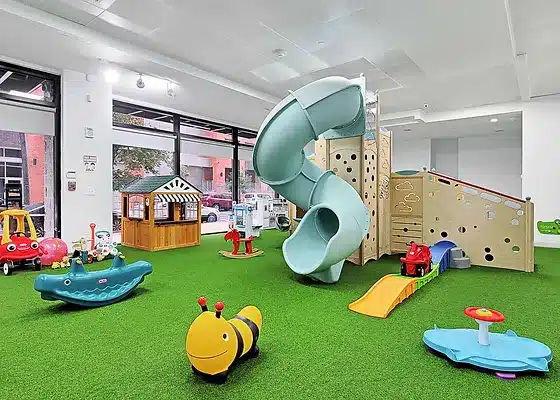
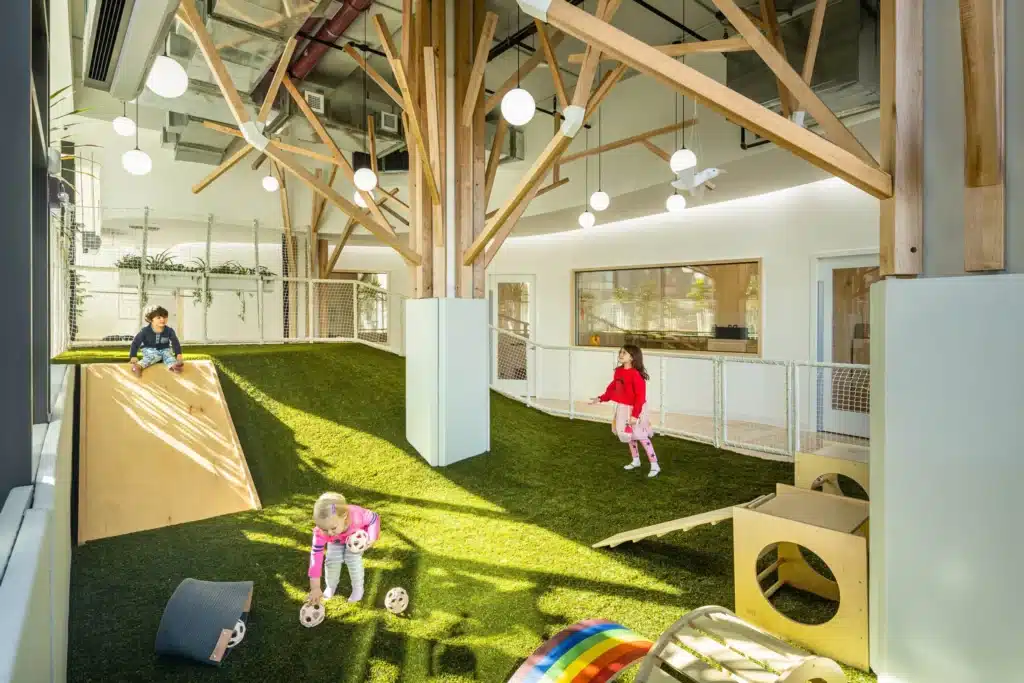

Safety First: Ensuring a Secure Play Environment
Creating a safe play environment is paramount when choosing playground equipment. It’s essential to prioritize safety to prevent injuries and ensure a secure space where children can explore and learn.
Compliance with Safety Standards
Ensuring playground equipment complies with safety standards is the first step in creating a secure environment. Look for equipment certified by recognized authorities, such as the ASTM International or the Consumer Product Safety Commission (CPSC), which indicates adherence to strict safety guidelines.
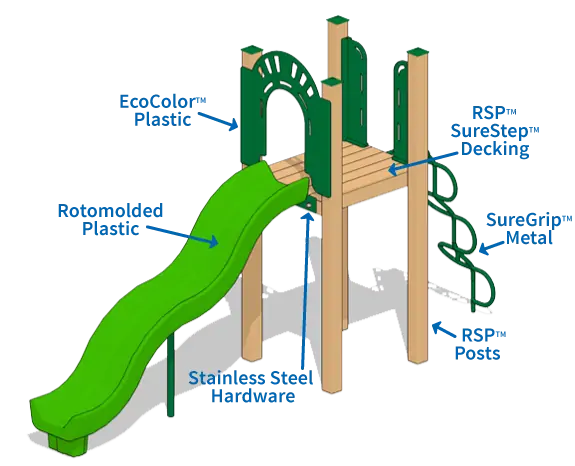
Quality Materials and Construction
Choosing playground equipment made from durable, non-toxic materials that can withstand harsh weather and heavy use. High-quality plastics, metals, and woods that are treated to resist rot and corrosion contribute to the longevity and safety of the equipment.
Design Considerations for Safety
Choose designs that minimize risk, such as rounded edges to prevent cuts and adequate spacing to avoid trapping fingers or limbs. Equipment should also be designed to prevent accidental falls, with guardrails and barriers in appropriate places.
Appropriate Surfacing
Install shock-absorbing surfacing materials like rubber mulch, wood chips, or synthetic turf around choosing playground equipment to cushion falls and reduce injury risk. The right surfacing material can make a significant difference in the safety of the play area.
Regular Maintenance and Inspections
Routine inspections and maintenance are crucial to identify and address potential hazards. Regular checks ensure that all parts of choosing playground equipment are in good condition, and any damages or wear and tear can be repaired promptly to maintain safety.
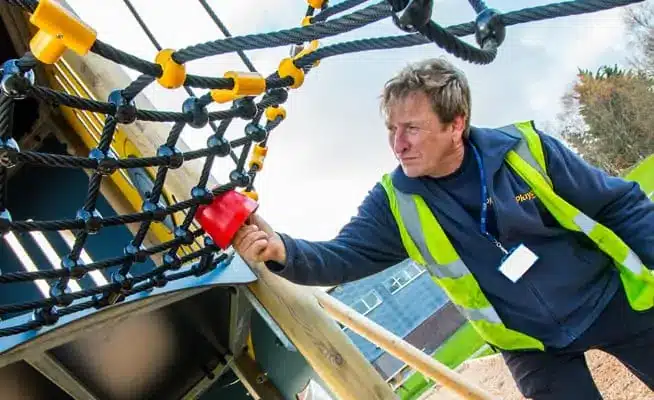
Age-Appropriate Equipment: Catering to Preschoolers
Choosing playground equipment that is suitable for preschoolers involves considering their developmental stage and physical capabilities to ensure the play area is both stimulating and safe.
Toddlers (Ages 1-3)
For toddlers, choosing playground equipment should focus on stimulating sensory experiences, fine and gross motor skill development, and safe exploration.
- Spring Riders: Small, ground-level animals or vehicles that rock back and forth.
- Low Slides: Short, gentle slopes with easy climb steps for safe sliding.
- Sandbox Areas: Spaces for tactile play, digging, and building.
- Crawl Tubes: Soft, safe tunnels that encourage crawling and exploration.
- Swings with Bucket Seats: Secure swings that support toddlers safely.
- Play Panels: Interactive boards with dials, mirrors, and tactile elements for sensory stimulation.

Preschoolers (Ages 3-5)
Preschoolers need equipment that challenges their growing physical skills, encourages imaginative play, and offers opportunities for social interaction.
- Playhouses: Small structures for imaginative play and social interaction.
- Balance Beams: Low-to-the-ground beams that help develop balance and coordination.
- Merry-Go-Rounds: Ground-level, manually spun platforms that encourage group play.
- Climbing Frames: Small, easily navigable structures for climbing and exploring.
- Jungle Gyms: Geometric climbing structures that promote physical activity.
- Themed Play Structures: Equipment that reflects themes like castles, ships, or animal kingdoms to inspire imaginative play.
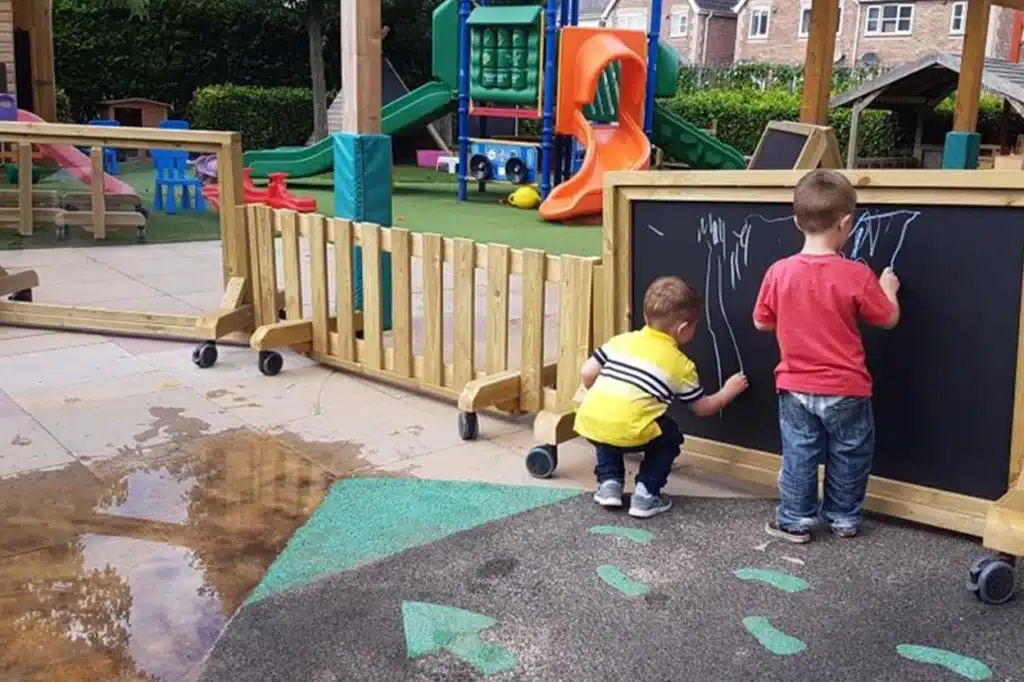
Elementary School (Ages 5-12)
Elementary-aged children require equipment that provides physical challenges, promotes social play, and supports their adventurous spirit.
- Swing Sets: Larger swings that cater to a wider range of sizes and abilities.
- Slide Towers: Taller slides with more complex structures for an exciting ride down.
- Monkey Bars: Overhead climbing structures that challenge upper body strength.
- Adventure Courses: Obstacle courses that offer various physical challenges.
- Climbing Walls: Vertical or inclined walls with grips for hands and feet.
- Basketball Hoops: Adjustable-height hoops to accommodate different skill levels.

Outdoor Play Equipment for Older Children (Ages 12+)
Older children and teens seek thrilling, challenging, and social play experiences.
- Skate Parks: Areas designed for skateboarding, rollerblading, and BMX biking.
- Zip Lines: High-adrenaline rides from one point to another on a cable.
- Fitness Challenge Courses: Obstacle courses designed for strength and endurance training.
- Climbing Towers: Tall structures that offer a challenging climb and a panoramic view.
- Basketball Courts: Full or half-courts for team sports and physical activity.
- Outdoor Gyms: Equipment for cardiovascular and strength training, suitable for teens.
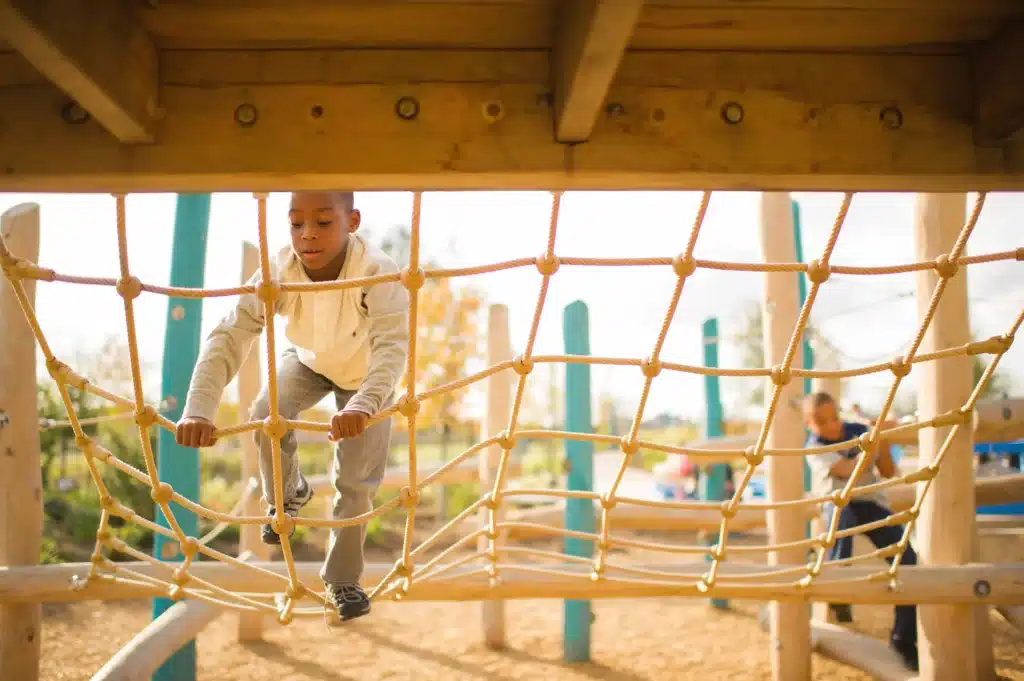
Scaled for Small Users
Equipment should be scaled to fit preschoolers’ size and abilities. Features like lower platforms, smaller steps and handrails, and shorter slides ensure that children can use the equipment safely and confidently.
Encouraging Development Through Play
Select equipment that promotes the development of gross motor skills, balance, coordination, and strength, such as simple climbers, balance beams, and crawl tunnels. These types of playground equipment challenge preschoolers just enough without overwhelming them.
Sensory Play Elements
Incorporate elements that stimulate the senses and support cognitive development, like sandboxes, water play stations, or musical instruments. Sensory play equipment encourages exploration and learning in a hands-on, interactive way.

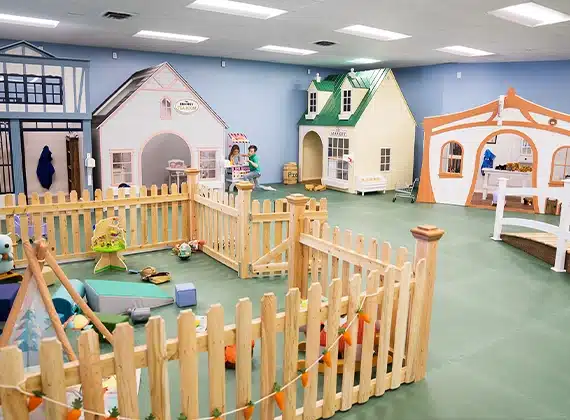
Safe Exploration Features
Choose features that allow safe exploration, such as enclosed playhouses, low-height platforms, and gentle slides. Equipment designed for safe exploration lets preschoolers practice their independence in a secure environment.
Interactive and Social Play Opportunities
Equipment that encourages cooperative play, such as seesaws, interactive panels, and sandbox areas, supports social and emotional development. These features help children learn to share, take turns, and play together, fostering social skills from an early age.
Location: Strategically Placing Preschool Playground Equipment
Choosing playground equipment for preschool at the right location is crucial for maximizing safety, accessibility, and engagement. The ideal spot combines practicality with the ability to captivate young imaginations, ensuring children have a safe and enriching environment to explore.
A prime location should offer a balance between sun and shade, protecting kids from direct sunlight while allowing outdoor play throughout the year. It’s essential to consider the playground’s proximity to classrooms. A closer placement ensures easier supervision and quick access for children, facilitating transitions between indoor and outdoor activities without disrupting the preschool routine.
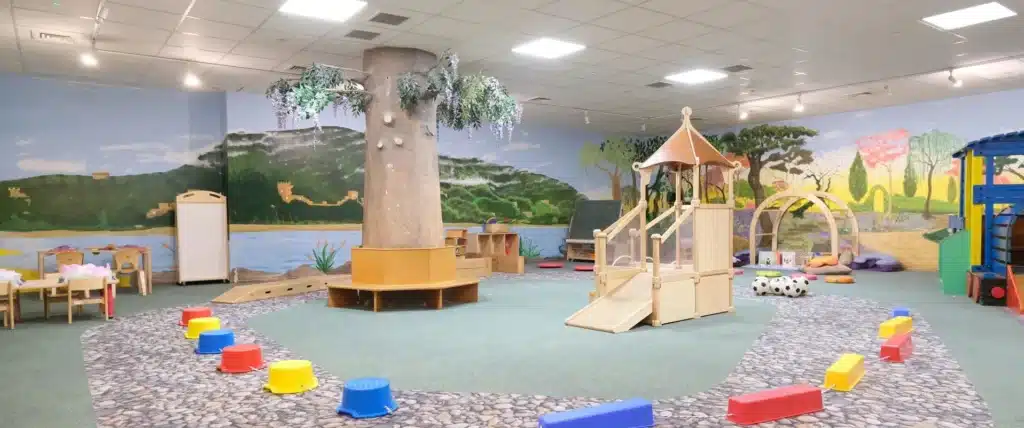
Ground conditions also play a significant role. The area should be level and well-drained to prevent water pooling, which can make surfaces slippery and hazardous. Accessibility is another key factor; the playground must be easily reachable for all children, including those with disabilities, ensuring every child can participate in play activities.
In summary, selecting the location for playground equipment in a preschool setting involves thoughtful consideration of environmental conditions, safety, supervision, and inclusivity. A well-chosen spot not only enhances the functionality of the play area but also contributes to the overall development and well-being of the children.


Inclusivity and Accessibility: Creating a Playground for All
Creating an inclusive and accessible playground is essential for ensuring that all children, regardless of their abilities, can enjoy and benefit from outdoor play. This commitment to inclusivity means carefully choosing playground equipment and designing play areas that accommodate a wide range of physical, sensory, and cognitive abilities.
Universal Design Principles: Incorporating universal design principles is the first step in creating a playground that is accessible to all children. This approach involves selecting equipment that can be used in various ways by children with different abilities. For example, wide ramps instead of traditional stairs allow children in wheelchairs to access play structures, and tactile play panels engage children with visual impairments.
Sensory-Friendly Equipment: An inclusive playground should offer sensory-friendly equipment that stimulates all five senses. Musical instruments, textured surfaces, and visually vibrant play panels cater to children with sensory processing disorders, autism, or visual impairments, providing them with a rich, engaging play experience.
Safe and Comfortable Surfacing: The choice of surfacing is critical in making playgrounds accessible. Poured-in-place rubber, rubber tiles, or engineered wood fiber that meets ADA (Americans with Disabilities Act) accessibility standards ensures that children using mobility aids can move freely around the playground, promoting independence and interaction among peers.


Durability and Maintenance: Building for the Future
Ensuring the durability and maintenance of choosing playground equipment is essential for creating a sustainable play environment that will serve generations of children. Choosing materials that can withstand weather, wear, and tear is the first step in guaranteeing longevity. Metals should be rust-resistant, plastics UV-stabilized, and wood treated against rot and insects. These materials ensure playground equipment remains safe, functional, and visually appealing over time.
Maintenance plays a crucial role in the lifecycle of choosing playground equipment. A regular maintenance schedule helps identify potential safety hazards, such as loose bolts or worn surfaces, before they become serious issues. This proactive approach not only extends the equipment’s life but also ensures it remains a safe environment for children to play.
In addition, responsive repairs and periodic updates are key to keeping the playground engaging and in good condition. Quick fixes to damaged parts prevent further deterioration, and adding new features or updating existing ones can rejuvenate the playground, keeping it relevant and exciting for children.
Building for the future with durable playground equipment and a solid maintenance plan ensures a lasting, safe, and engaging outdoor play area for children.

Custom and Themed Playgrounds: Tailoring Dreams into Reality
Custom and themed playgrounds take the concept of play to an entirely new level by creating immersive environments that captivate children’s imaginations and encourage active engagement. By focusing on specific themes or customizing playground equipment to suit particular interests or the cultural background of a community, these playgrounds provide unique and memorable play experiences.
Crafting Unique Play Experiences: Custom playgrounds are designed with a specific vision in mind, often reflecting the unique desires of a community, school, or park. This might include incorporating local history or cultural themes into the playground design, using specific color schemes to match a school’s colors, or integrating educational elements relevant to the curriculum. Customization allows for the creation of a playground that is not just a play area but a space that tells a story or conveys a message, deeply engaging the children who use it.
Thematic Exploration through Play: Themed playgrounds transport children to different worlds, from jungles and castles to spaceships and underwater adventures. This thematic approach to playground equipment design encourages imaginative play, a critical component of cognitive development. Themes can be broad, appealing to a wide range of interests, or niche, catering to specific educational goals or community interests. Either way, they provide a backdrop for children to engage in storytelling, role-playing, and creative exploration.

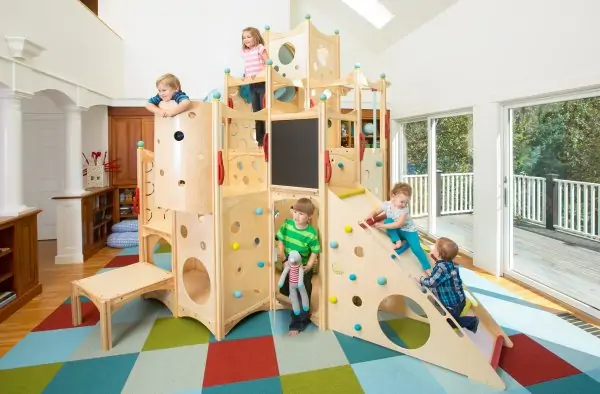

Benefits of Customization: Custom and themed playgrounds offer several benefits beyond the aesthetic appeal. They can make play more accessible and engaging for children of all abilities by incorporating inclusive design elements that match the theme, such as wheelchair-accessible pirate ships or sensory play panels with a space exploration theme. These playgrounds also foster a sense of community and belonging, as they reflect the unique identity and values of the people they serve.
Challenges and Considerations: While custom and themed playgrounds offer unique benefits, they also come with their own set of challenges. Designing a playground that is both imaginative and safe requires careful planning and adherence to safety standards. Additionally, the complexity of custom designs can increase costs, making budgeting a crucial consideration. Despite these challenges, the value of creating a one-of-a-kind play space that inspires children to explore, learn, and grow is immeasurable.

Thoughtful playground design plays a crucial role in fostering children’s physical, cognitive, and social development. By incorporating equipment that caters to a wide range of abilities and interests, playgrounds can offer inclusive and stimulating environments where children of all backgrounds and abilities can learn, grow, and play together. This approach not only supports the individual development of each child but also promotes understanding, empathy, and cooperation among young peers, laying a foundation for a more inclusive society.
Investing in well-designed playgrounds represents a commitment to the well-being and future of our communities. Such spaces do not merely serve as venues for play but as hubs of community engagement, where families gather and connections are forged. The benefits of these playgrounds extend beyond immediate physical activity, influencing children’s lifelong attitudes towards fitness, social interaction, and outdoor exploration. Ultimately, thoughtfully designed playgrounds enrich the lives of children and their communities, making them essential components of vibrant, healthy neighborhoods.













